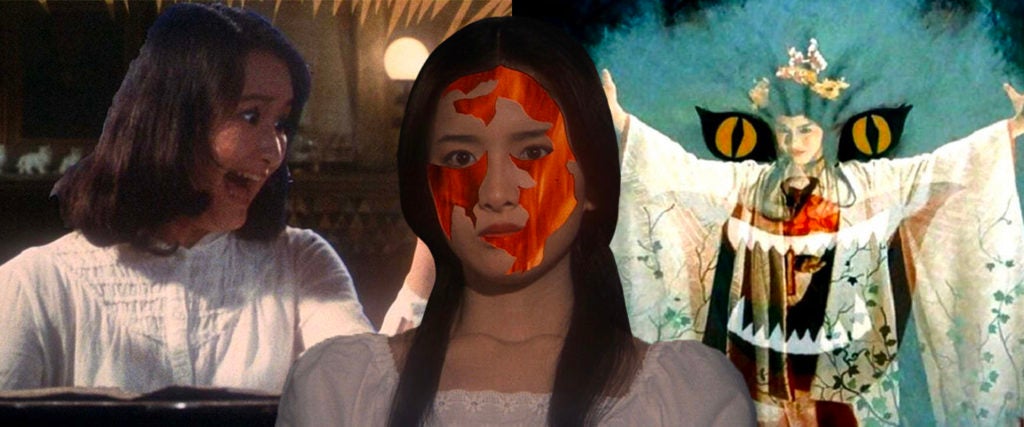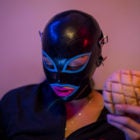With more and more movie streaming services popping up, it can feel impossible to keep track of what’s showing where. So to help, this October I’ll be recommending a different film every day from one such service that embodies the spooky spirit of the season. From classic Halloween movies to indie horror to campy dark comedies, this is 31 Days of a Very Chingy Halloween.
Today we look at House, Nobuhiko Obayashi’s absurdist take on a classic haunted mansion story, available to stream on HBO Max and Criterion Channel.
When her father informs her of his intention to remarry eight years after the death of her mother, teenager Gorgeous decides to skip their planned summer vacation to visit her elderly aunt in the countryside along with six of her school friends — Prof, Mac, Kung Fu, Sweet, Melody and Fantasy. But when they arrive at the sprawling mansion, the stately manor begins to play tricks on them. As the girls begin to disappear one by one, it becomes clear that the house is haunted by the vengeful spirit of Gorgeous’ aunt who lost her love in World War II and now must eat young, unmarried women.
While House (or Hausu, as it’s sometimes called in the West) sounds like a straightforward ghost story, it’s Nobuhiko Obayashi’s out-of-the-box approach to filmmaking that makes this directorial debut a cult classic. The film uses an array of effects that were unorthodox at the time — the skylines are painted, the trains are animated and trick photography places body parts all over a room. The kills are no less outrageous, with a piano devouring a girl in a cacophony of color, sound and limbs. At least two people are also turned into fruit.
Obayashi started out in experimental films before making his bones shooting commercials in the 1970s, but House was his first feature. Commissioned by Japanese studio Toho — which was most famous for the Godzilla series and was then looking for their own version of Jaws — Obayashi decided to do a haunted house movie. Trying to find fears outside of what he could conceive, he consulted someone very close to him: his daughter Chigumi, who was a preteen at the time.
Of the seven schoolgirls, Gorgeous is the only character with any character exploration, the rest being largely stock characters named after their defining personality traits: Prof is the smart one; Fantasy is a daydreamer; Sweet is the nicest girl; Kung Fu is the tomboy; Mac is the big eater; and Melody is a musician. They’re almost like a Scooby-Doo gang in their dynamics, with each functioning less as a character and more as a way to examine the childhood fears Chigumi shared with her father (as such, Chigumi is credited as the original story writer).
A piano that eats fingers was inspired by the time she caught her fingers between the keys while practicing. A girl crushed inside a grandfather clock was born of an ominous one in her grandparents’ house. Obayashi wanted the visuals to mirror that child-like quality, keeping them as absurd and unrealistic as possible.
But House isn’t all nonsense, nor is it without influence from Obayashi’s own experiences. Gorgeous’ aunt was made into a vengeful spirit after she lost her love in World War II; Obayashi was born in Hiroshima Prefecture in 1938, seven years before the atomic bombing, and a familiarity with death shaped his youth. Gorgeous and her classmates could be seen as a representation of a generation that never knew such tragedy, speaking of the event with a lighthearted amusement, describing the mushroom cloud as being like “a cotton candy.”
Eventually, the girls learn the true weight of their history, but in the spirit of childish glee (Obayashi reportedly had a blast making the film), the dramatic revelation is immediately undercut by a non-sequitur of a dog running a ramen shop and a girl being absorbed by a ceiling fixture. In the end, House is a truly frightening film not in spite of how ridiculous it is, but because of it.
To see a list of each of the previous entries, check out the A Very Chingy Halloween list on Letterboxd.

